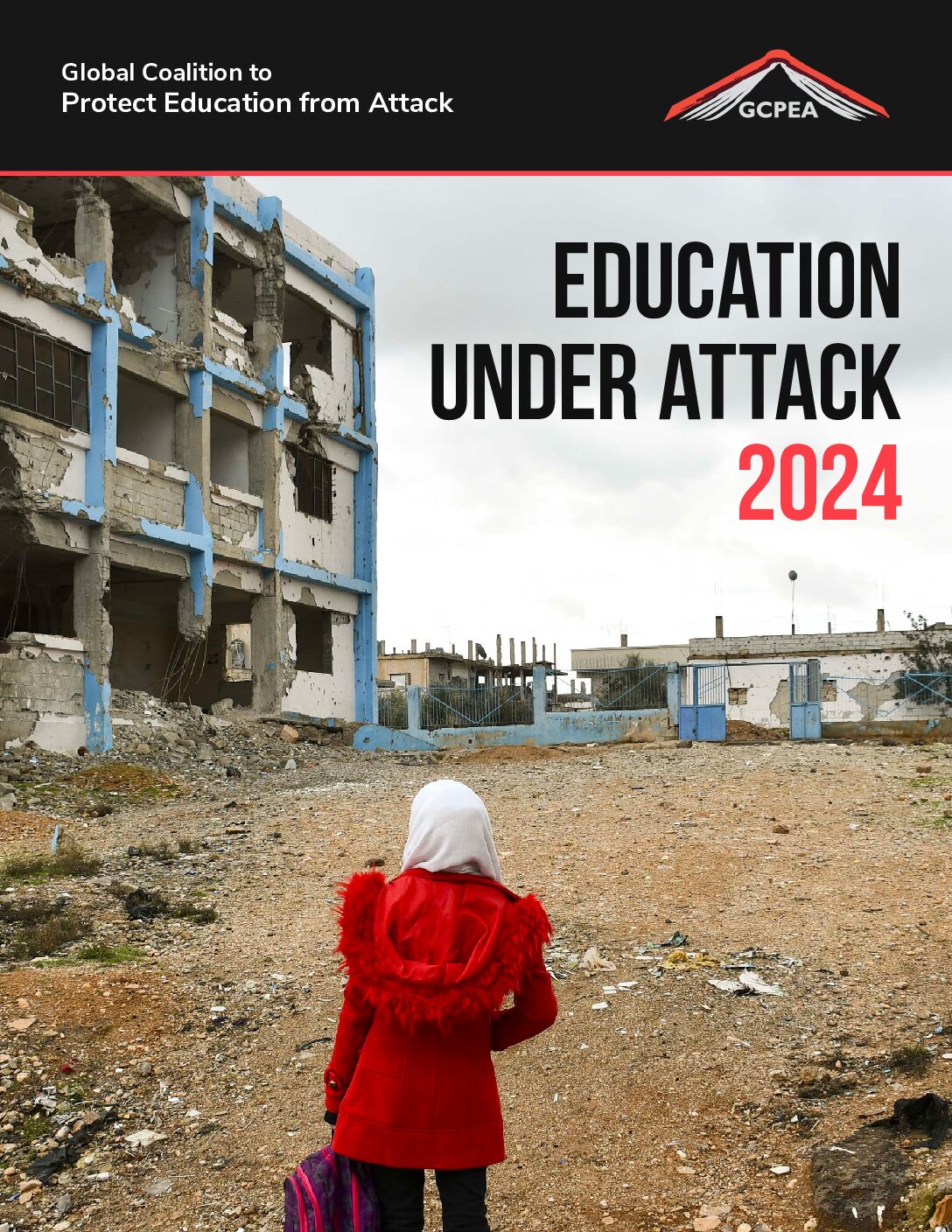GCPEA News
GCPEA Encourages States to Announce Endorsement of the Safe Schools Declaration at the World Humanitarian Summit
Global Coalition to Protect Education from Attack, May 12, 2016
Education was consistently raised by children as a top priority in all types of emergencies over the past decade, as shown in the report Putting Children at the Heart of the World Humanitarian Summit. Children expressed concern over disruptions to their education and how this would impact their ability to earn income in the future. Both children and parents viewed protection as a necessary precondition for continuing their education in conflict settings.
Today, one in four children between the ages of 6 and 15 living in conflict areas are missing out on their education. School children, university students, teachers, academics, and education establishments have been targets of attack in at least 70 countries, between 2009 and 2013. Furthermore, over the past decade in the majority of countries affected by conflict, fighting forces have used schools and universities for military purposes (e.g. as bases, barracks, weapons stores and detention facilities), thus potentially exposing students and teachers to retaliatory attacks and impairing efforts to ensure the continuation of education during war-time.
In his report for the World Humanitarian Summit (WHS), One Humanity: Shared Responsibility, the UN Secretary-General identified the protection of schools from attack and military use during conflict as a key element for the realization of Core Responsibility Two: Uphold the Norms that Safeguard Humanity. He underlined the need to ensure respect for prohibitions against attacks directed at civilians and civilian infrastructure and specifically recommended that states “through legislation, military manuals and orders, and other measures, (…) limit the military use of these places that could render them military objectives.”4
A practical tool to help states and other actors better safeguard the civilian character of educational facilities and thereby their protected status under international humanitarian law is the Guidelines for Protecting Schools and Universities from Military Use during Armed Conflict. These Guidelines were developed over several years of consultations with governments, armed forces, and international organizations, and were finalized under the leadership of Norway and Argentina in December 2014. The Guidelines are non-binding and do not create new international legal obligations. Rather, they aim to instill a voluntary shift in behavior, drawing on existing practice, in order to better protect educational facilities, staff, and students from attack.
States can endorse and commit to use these Guidelines by joining the Safe Schools Declaration. Through this Declaration, which was opened for endorsement at the Oslo Conference on Safe Schools on May 29, 2015, states make a set of concrete commitments to better protect education during armed conflict, including bringing the Guidelines as far as possible and appropriate into relevant policy and operational frameworks; collecting data on attacks on students, educational personnel, and facilities; assisting victims; and supporting humanitarian programming that promotes the continuation of education during war-time. Since May 2015, over 50 states from around the world have already joined the Safe Schools Declaration.
At the WHS this May, states and other stakeholders are called upon to make individual commitments to advance the Core Responsibilities highlighted in the Secretary-General’s report. A High-Level Leaders’ Roundtable entitled “Uphold the Norms that Safeguard Humanity” will take place during the official segment of the Summit, and provides an ideal forum within which to make a commitment relating to the Safe Schools Declaration. An additional forum in which to announce such a commitment is a high level side event on the Safe Schools Declaration that will be hosted by the Norwegian Foreign Minister. The date and time of this side event are still being confirmed.
As part of their commitments under Core Responsibility Two to “uphold the norms that safeguard humanity,” the Global Coalition to Protect Education from Attack (GCPEA) urges states at the WHS to either:
-
Announce their endorsement of the Safe Schools Declaration, or;
-
Announce measures they are planning to take to implement the Safe Schools Declaration, if they have already endorsed it.
How to endorse the Safe Schools Declaration?
The Government of Norway currently acts as depositary for endorsements of the Safe Schools Declaration. A model endorsement letter is available, which states can send to ybh@mfa.no at any time. The letter should be signed by a person entitled to make the political commitment on behalf on his/her government (e.g. a Minister, or Ambassador).
A full up-to-date list of endorsements of the Safe Schools Declaration is available at:
https://www.protectingeducation.org/guidelines/support
Additional information:
-
GCPEA’s Commentary on the Guidelines for Protecting Schools and Universities from Military Use during Armed Conflict
-
GCPEA’s Questions & Answers on the Guidelines for Protecting Schools and Universities from Military Use during Armed Conflict.



